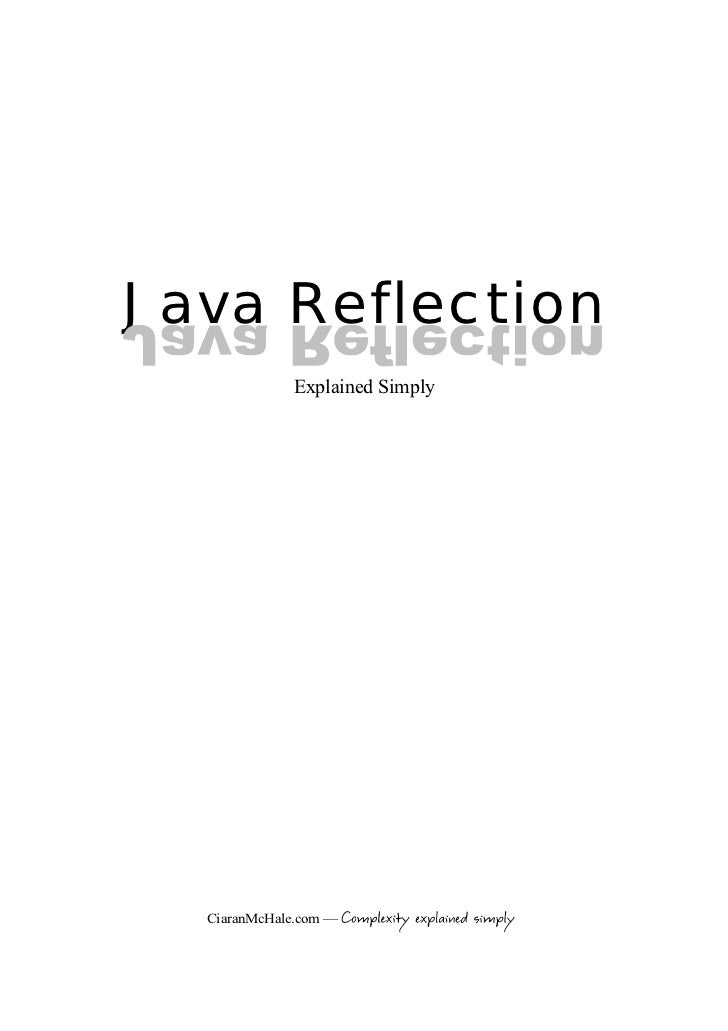

- JAVA REFLECTION PERFORMANCE HOW TO
- JAVA REFLECTION PERFORMANCE FULL
- JAVA REFLECTION PERFORMANCE CODE
This makes sense since the dplyr verb approach actually works by translating the commands into Spark SQL via dbplyr and then sends those translated commands to Spark via that interface. We see multiple invocations do the sql method and also the columns method. First, we will close the previous connection and create a new one with the configuration containing the set to TRUE, and copy in the flights dataset: sparklyr::spark_disconnect(sc) We will use TRUE in our article to keep the output short and easily manageable.

# Invoke the `getAll` method and look at part of the result We see that there is a getAll method that could prove useful, returning a list of tuples and taking no arguments as input: # Returns a list of tuples, takes no arguments: # "getTimeAsSeconds" "getTimeAsSeconds" "getWithSubstitution" # "getSizeAsMb" "getTimeAsMs" "getTimeAsMs" # "getSizeAsKb" "getSizeAsKb" "getSizeAsMb" # "getSizeAsBytes" "getSizeAsGb" "getSizeAsGb"

# "getOption" "getSizeAsBytes" "getSizeAsBytes" # "getDeprecatedConfig" "getDouble" "getenv" # "getAvroSchema" "getBoolean" "getClass" Spark_conf_methods % getAvailableMethods() ScMethodNames % spark_context() %>% invoke("conf") Similarly, we can look at a SparkContext class and show some available methods that can be invoked: scMethods % spark_context() %>% Params % invoke("getClass") %>% invoke("getMethods") Let us write a small wrapper that will return a some of the method’s details in a more readable fashion, for instance the return type and an overview of parameters: getMethodDetails % invoke("getReturnType") %>% invoke("toString") This is a good result, but the output is not very user-friendly from the R user perspective. We can see that the invoke() chain has returned a list of Java object references, each of them of class . # public .RpcEndpointRef .org$apache$spark$SparkContext$$_heartbeatReceiver() # public scala.Option .org$apache$spark$SparkContext$$_ui() # public scala.Option .org$apache$spark$SparkContext$$_progressBar() # public .org$apache$spark$SparkContext$$_env() # public .org$apache$spark$SparkContext$$_conf() # public .CallSite .org$apache$spark$SparkContext$$creationSite() # Connect and copy the flights dataset to the instance
JAVA REFLECTION PERFORMANCE CODE
You can then use the user name rstudio and password pass to login and continue experimenting with the code in this post.

Should make RStudio available by navigating to your browser. If you have docker available, running docker run -d -p 8787:8787 -e PASSWORD=pass -name rstudio jozefhajnala/sparkly:add-rstudio
JAVA REFLECTION PERFORMANCE FULL
The full setup of Spark and sparklyr is not in the scope of this post, please check the first one for some setup instructions and a ready-made Docker image. How sparklyr communicates with Spark, invoke logging.Investigating DataSet and SparkContext class methods.Using the Java reflection API to list the available methods.In this fifth part, we will look into more details around sparklyr’s invoke() API, investigate available methods for different classes of objects using the Java reflection API and look under the hood of the sparklyr interface mechanism with invoke logging.
JAVA REFLECTION PERFORMANCE HOW TO
In the previous parts of this series, we have shown how to write functions as both combinations of dplyr verbs, SQL query generators that can be executed by Spark and how to use the lower-level API to invoke methods on Java object references from R. For the best experience, charts and code formatting, read the article on its original home.


 0 kommentar(er)
0 kommentar(er)
